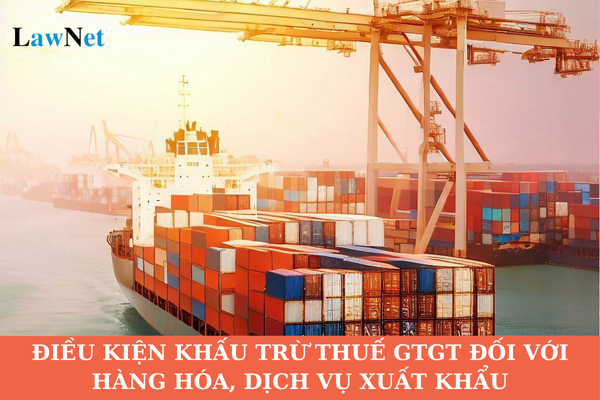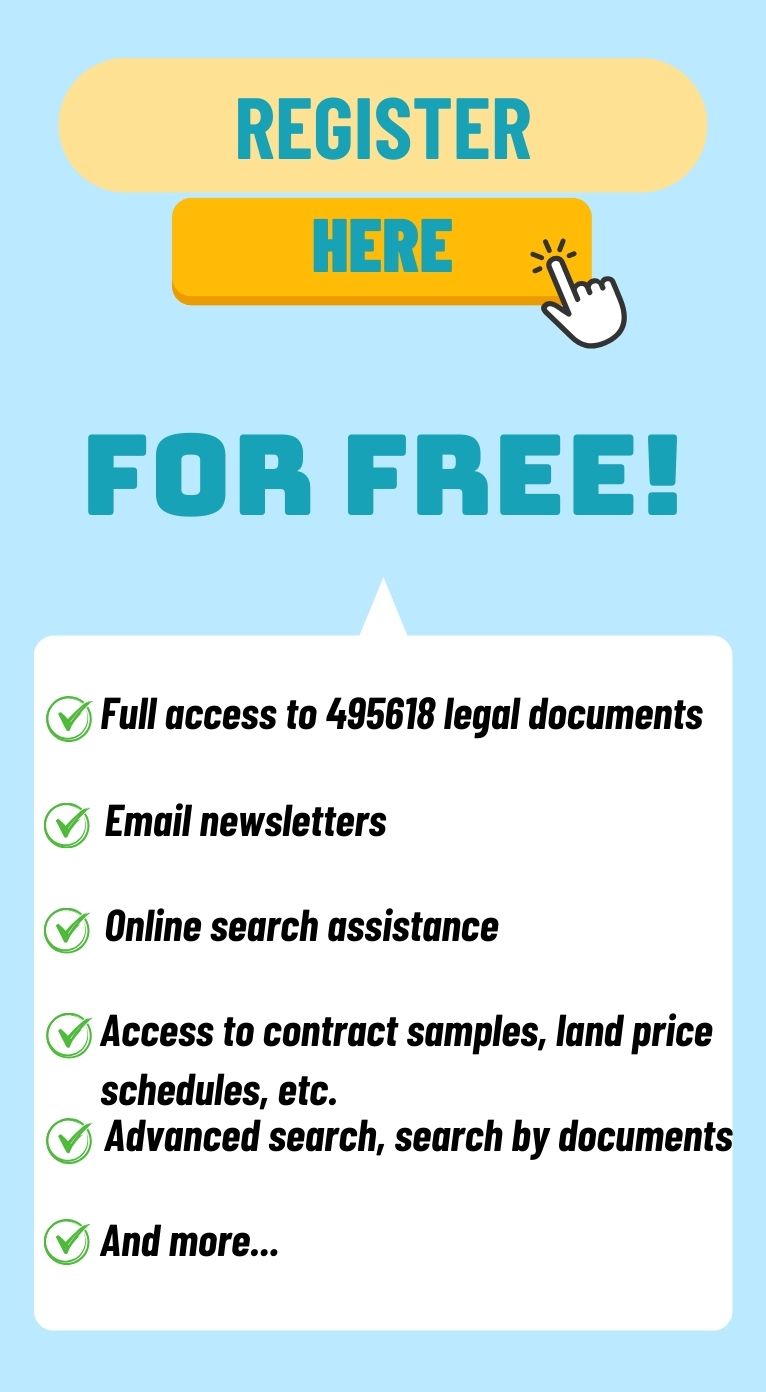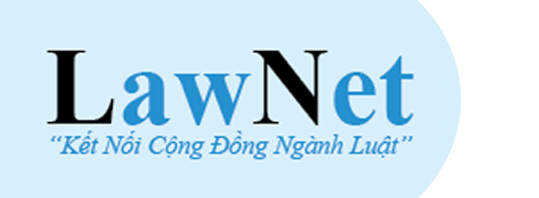What are the conditions for input value-added tax deduction for exported goods and services in Vietnam?
What are the conditions for input value-added tax deduction for exported goods and services in Vietnam?
Based on Point c, Clause 2, Article 12 of the Law on Value Added Tax 2008, as amended by Clause 6, Article 1 of the Law on Amendments to the Value Added Tax Law 2013, stipulates as follows:
Input Value-Added Tax Deduction
...
- Conditions for input value-added tax deduction are prescribed as follows:
a) There must be a value-added invoice for purchased goods and services or a document of value-added tax payment at the importation stage;
b) There must be non-cash payment vouchers for purchased goods and services, except for goods and services purchased each time with a value of less than twenty million dong;
c) For exported goods and services, in addition to the conditions stipulated in point a and point b of this clause, there must also be: a signed contract with a foreign party for the sale, processing of goods, and provision of services; an invoice for sold goods and services; non-cash payment vouchers; and a customs declaration for exported goods.
Payment for exported goods and services in the form of offsetting payment between exported goods and services and imported goods and services, or debt repayment on behalf of the Government, shall be considered as non-cash payment.
According to the above regulation, the conditions for input value-added tax deduction for exported goods and services are:
- There is a value-added invoice for purchased goods and services or a document of value-added tax payment at the importation stage;
- There are non-cash payment vouchers for purchased goods and services, except for goods and services purchased each time with a value of less than twenty million dong;
- A contract signed with a foreign party for the sale, processing of goods, and provision of services;
- An invoice for sold goods and services; non-cash payment vouchers; customs declaration for exported goods.
Payment for exported goods and services in the form of offsetting payment between exported goods and services and imported goods and services, or debt repayment on behalf of the Government, is considered as non-cash payment.
Note:
From July 1, 2025, when the Law on Value Added Tax 2024 comes into effect, the conditions for input value-added tax deduction for exported goods and services are as follows:
- There is a VAT invoice for purchased goods and services or documents of VAT payment on behalf of the foreign party.
- Non-cash payment vouchers for purchased goods and services, except for certain special cases as stipulated by the Government of Vietnam.
- A contract signed with a foreign party for the sale, processing of goods, and provision of services.
- An invoice for sold goods and services.
- Non-cash payment vouchers.
- Customs declaration for exported goods.
- Packing list, bill of lading, and goods insurance documents (if any).

What are the conditions for input value-added tax deduction for exported goods and services in Vietnam? (Image from Internet)
What are procedures for the value-added tax refund for exported goods and services in Vietnam?
Based on Clause 2, Article 14 of the Law on Value Added Tax 2008, as amended by Clause 3, Article 1 of Law No. 106/2016/QH13, the regulations on VAT refund for exported goods and services are as follows:
A business establishment in a month or quarter with exported goods and services, if it has outstanding input VAT from three hundred million dong or more, is entitled to a VAT refund on a monthly or quarterly basis, except for imported goods for export or exported goods that are not exported at the customs operation locality as prescribed by the Law on Customs. VAT refund is provided first and inspected later for taxpayers manufacturing export goods who do not violate tax, customs laws for two consecutive years; taxpayers not being subject to high-risk categories as prescribed by the Law on Tax Management.
What is the value-added tax rate on exported goods and services in Vietnam?
According to Clause 1, Article 9 of Circular 219/2013/TT-BTC, it is stipulated as follows:
Tax Rate of 0%
- Tax rate of 0%: applied to exported goods and services; construction and installation activities overseas and in non-tariff zones; international transport; goods and services not subject to VAT when exported, except for cases where the 0% rate does not apply as guided in Clause 3 of this Article.
Exported goods and services are goods and services that are sold, provided to organizations, individuals abroad and consumed outside Vietnam; sold, provided to organizations, individuals in non-tariff zones; goods and services supplied to foreign customers in accordance with the law.
...
Thus, exported goods and services are subject to a VAT rate of 0%.
Exported goods and services under the above regulations are understood as goods and services sold, supplied to organizations, individuals abroad and consumed outside Vietnam; sold, supplied to organizations, individuals in non-tariff zones; goods and services provided to foreign customers according to the provisions of law. Where:
(1) Exported goods include:
- Goods exported abroad, including export entrustment;
- Goods sold into non-tariff zones according to the regulations of the Prime Minister of the Government of Vietnam; goods sold to duty-free shops;
- Goods sold where the point of delivery and receipt of goods is outside Vietnam;
- Spare parts and materials for repairing and maintaining means and equipment for foreign parties and consumed outside Vietnam;
- Cases considered as export under the provisions of law:
+ Processed goods for transfer pursuant to the commercial law on international sale of goods and agency activities for trading, processing goods with foreign countries.
+ Goods exported on the spot as prescribed by law.
+ Exported goods for sale at fairs and exhibitions abroad.
(2) Export services include:
Services provided directly to organizations, individuals abroad and consumed outside Vietnam; provided directly to organizations, individuals in non-tariff zones and consumed in non-tariff zones.
Note:
- Individuals abroad are foreigners not residing in Vietnam, Vietnamese nationals residing abroad, and being outside Vietnam during the service provision. Organizations and individuals in non-tariff zones are organizations and individuals with business registration and other cases as stipulated by the Prime Minister of the Government of Vietnam.
- For services provided such that the provision occurs both in Vietnam and outside Vietnam, but the service contract is signed between two taxpayers in Vietnam or having a permanent establishment in Vietnam, the 0% rate only applies to the value portion of the service performed outside Vietnam, except for the case of insurance services for imported goods which are subject to 0% rate on the entire contract value. If the contract does not specify the value portion of services performed in Vietnam, the taxable value is determined according to the ratio (%) of costs incurred in Vietnam relative to total costs.
- Business establishments providing services as taxpayers in Vietnam must have documents proving services performed outside Vietnam.

